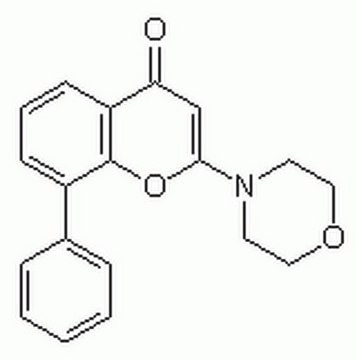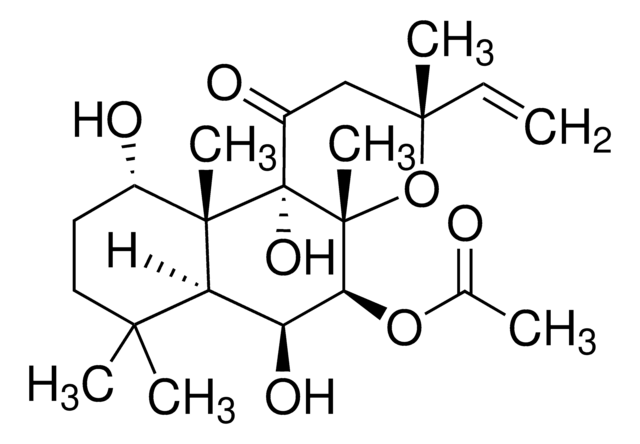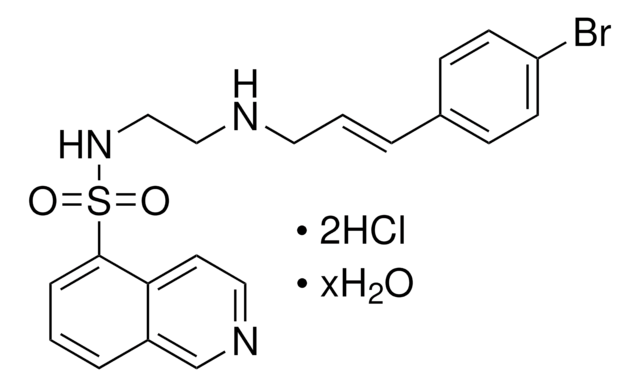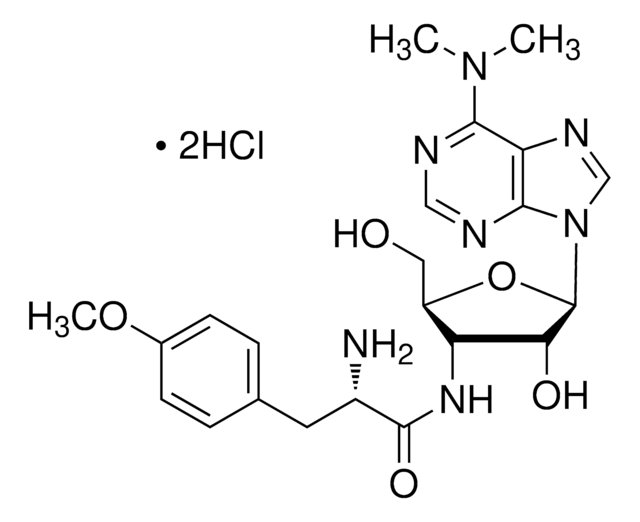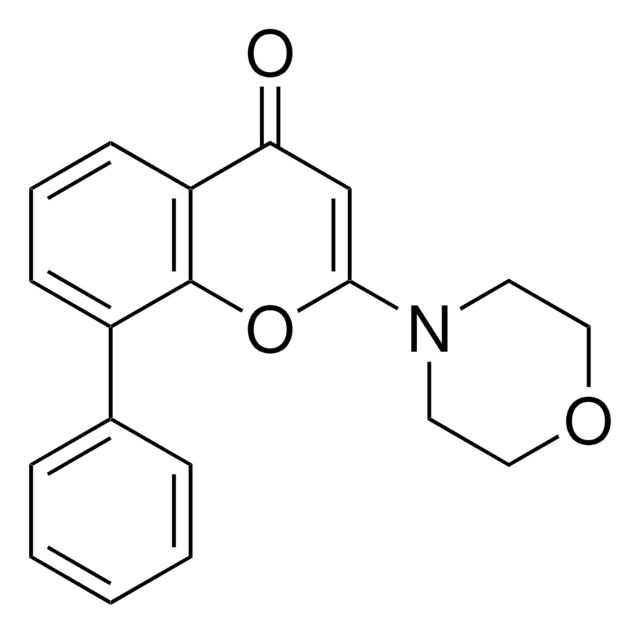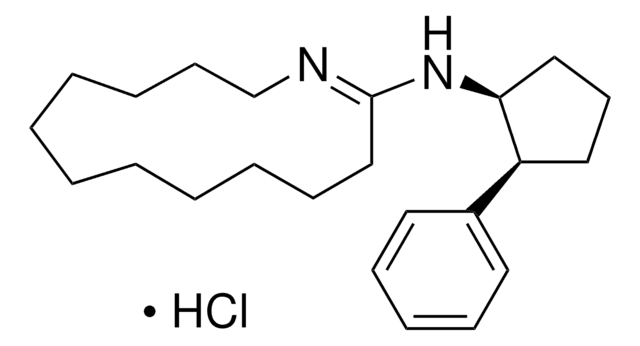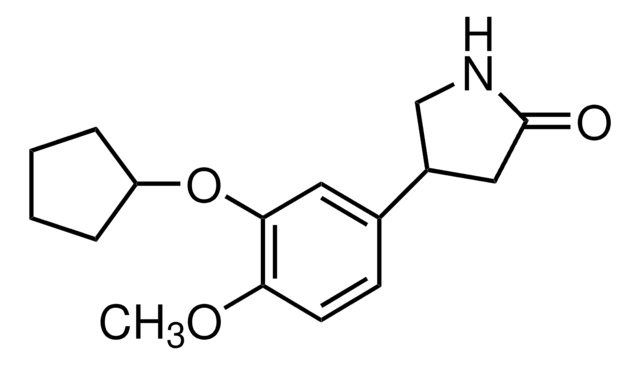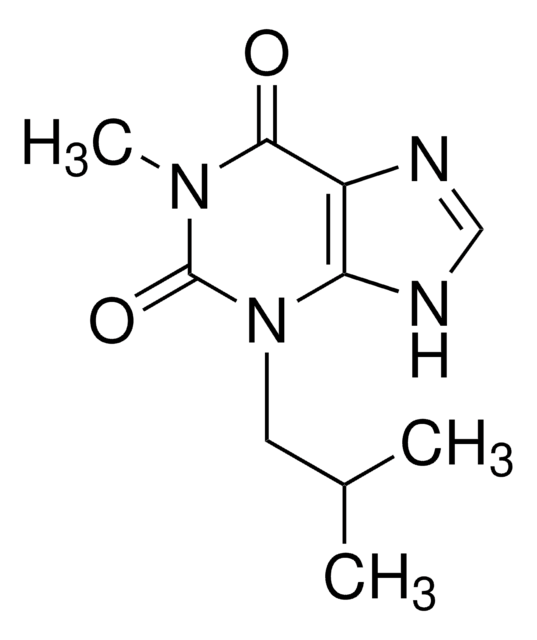568500
SQ 22536
Cell-permeable adenylate cyclase inhibitor.
Synonym(s):
SQ 22536, 9-(Tetrahydro-2ʹ-furyl)adenine
Sign Into View Organizational & Contract Pricing
All Photos(1)
About This Item
Empirical Formula (Hill Notation):
C9H11N5O
CAS Number:
Molecular Weight:
205.22
MDL number:
UNSPSC Code:
12352200
NACRES:
NA.77
Recommended Products
Quality Level
assay
≥98% (HPLC)
form
solid
manufacturer/tradename
Calbiochem®
storage condition
OK to freeze
color
off-white
solubility
DMSO: 25 mg/mL
water: 5 mg/mL
shipped in
ambient
storage temp.
2-8°C
InChI
1S/C9H11N5O/c10-8-7-9(12-4-11-8)14(5-13-7)6-2-1-3-15-6/h4-6H,1-3H2,(H2,10,11,12)
InChI key
UKHMZCMKHPHFOT-UHFFFAOYSA-N
General description
Cell-permeable adenylate cyclase inhibitor. Blocks PTH-stimulation of adenylate cyclase (IC50 = 200 µM). Reduces PGE2-induced inhibition of O2·– production.
Biochem/physiol Actions
Cell permeable: yes
Primary Target
adenylate cyclase
adenylate cyclase
Product does not compete with ATP.
Reversible: no
Target IC50: 200 µM against adenylate cyclase
Warning
Toxicity: Irritant (B)
Reconstitution
Following reconstitution, store in the refrigerator (4°C). Stock solutions are stable for up to 2 weeks at 4°C.
Other Notes
Talpain, E., et al. 1995. Br. J. Pharmacol. 114, 1459.
Tamaoki, J., et al. 1993. Prostaglandins45, 363.
Fabbri, E., et al. 1991. J. Enzyme Inhib.5, 87.
Goldsmith, B.A. and Abrams, T.W. 1991. Proc. Natl. Acad. Sci. USA 88, 9021.
Tamaoki, J., et al. 1993. Prostaglandins45, 363.
Fabbri, E., et al. 1991. J. Enzyme Inhib.5, 87.
Goldsmith, B.A. and Abrams, T.W. 1991. Proc. Natl. Acad. Sci. USA 88, 9021.
Legal Information
CALBIOCHEM is a registered trademark of Merck KGaA, Darmstadt, Germany
wgk_germany
WGK 3
flash_point_f
Not applicable
flash_point_c
Not applicable
Certificates of Analysis (COA)
Search for Certificates of Analysis (COA) by entering the products Lot/Batch Number. Lot and Batch Numbers can be found on a product’s label following the words ‘Lot’ or ‘Batch’.
Already Own This Product?
Find documentation for the products that you have recently purchased in the Document Library.
NaHye Lee et al.
The FEBS journal, 287(17), 3841-3870 (2020-02-01)
Microglia (MG), the principal neuroimmune sentinels in the brain, continuously sense changes in their environment and respond to invading pathogens, toxins, and cellular debris, thereby affecting neuroinflammation. Microbial pathogens produce small metabolites that influence neuroinflammation, but the molecular mechanisms that
Our team of scientists has experience in all areas of research including Life Science, Material Science, Chemical Synthesis, Chromatography, Analytical and many others.
Contact Technical Service